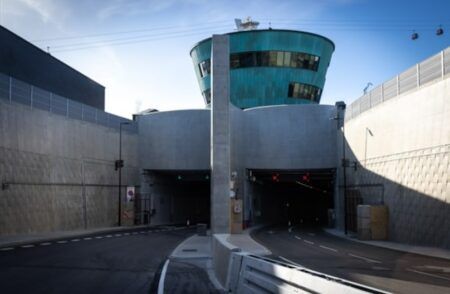A new report from the Urban Transport Group finds that the significant growth of van traffic in the UK is creating ‘considerable challenges’ for cities and urban areas, with their increased usage exacerbating issues such as poor air quality and congestion.
The report, White van cities: questions, challenges and options on the growth of urban van traffic, shows that 3.8 million vans are now registered in the UK. This figure has increased by 74% since 1996, with vans now representing 15% of all motor vehicle traffic, compared to just 10% 20 years ago.
Vans are generally defined as goods vehicles below 3.5 tonnes in weight including their cargo. The reasons for this growth are not yet fully understood, but some possible explanations that have been suggested include the rise of online shopping deliveries and lighter regulation for vans when compared to heavy goods vehicles (HGVs/trucks).
The growth presents a number of challenges for the UK’s cities and city regions, but the report also highlights the vital economic contribution of the vans sector, which is a ‘significant source’ of employment, with over 250,000 people employed as van drivers, and facilitates business activities beyond the logistics sector.
Part of the Urban Transport Group’s wider work on freight, the report sets out ways in which companies and authorities have approached management of van traffic to mitigate negative impacts and maximize positive contributions, but acknowledges that more research and analysis is still needed.
The key findings highlighted in the report include:
• Emissions – 96% of registered vans in the UK are diesel-fueled, and vans contribute 30% of nitrogen oxide (NOx) emissions from road transport, and 16% of carbon dioxide (CO₂) emissions from road transport;
• Congestion – In 2013, congestion cost the UK economy £20.5bn (US$29bn), with research revealing congestion collectively costs van fleets £915m (US$1.3bn) a year;
• Safety – Although vans have a lower rate of accidents per mile than other road vehicles, of the 10,800 vans stopped at the roadside each year, 88.5% are overloaded, 63% have serious mechanical defects, and 50% fail their MOT;
• Data and technology – New technologies offer opportunities to improve the efficiency of deliveries and make more effective use of vehicles, cutting fleet mileages and associated emissions.
“Van traffic is the fastest growing element of road traffic in the UK, and this growth is set to continue. This presents considerable challenges for cities as they seek to reduce emissions and air pollution, cut congestion, and provide delivery access for vehicles, while designing places that prioritize people,” noted Laura Shoaf, managing director of Transport for West Midlands (TfWM), and lead board member for the Urban Transport Group on freight.
“But there are still a great deal of unknowns surrounding this growth. Gaining a better understanding of how and why van traffic is growing, who owns, manages and uses these vehicles and what their journey purpose is, would allow policymakers to better grasp the issues and develop responses. Technology and data may offer opportunities to further improve our understanding.”




